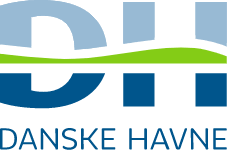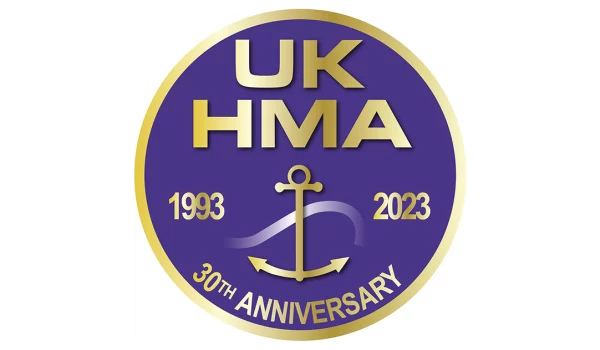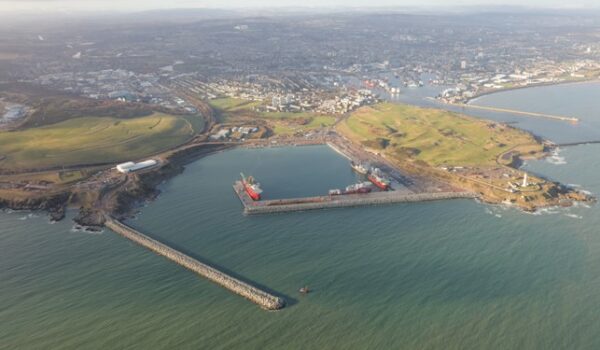
The maritime industry, and port authorities as an important part of it, are facing growing demands for sustainability in terms of social, economic, and environmental issues. Naturally, this is not a problem of only maritime community, but a common challenge for the whole mankind. High-level organizations, such as the United Nations or the European Union, have set policies and provided statements, encouraging or even demanding actions for a more sustainable future.
Maritime logistics is a thousands of years old industry; from the ancient times people have been interested in crossing the seas. The core business of ports is, and has always been, ensuring the safe and efficient flow of goods and people from one place to another. Cargo volumes have grown exponentially in the recent decades with the expanding popularity of e-commerce; and because shipping is the most cost-effective mode of transport. The combination of rising traffic volumes and the growing pressure to minimize emissions has thriven the ports to find solutions to balance the needs between the business and the environment.

According to ESPO’s (European Sea Port Organization) latest Environmental report, 96% of ports have an environmental policy in place, and 88% of ports have defined specific targets for environmental improvement. This shows that environmental aspects are clearly one of the ports’ priorities. It is important to also recognize that environmental objectives do not contradict with economic priorities. Especially during tighter financial times, we need to find solutions which take both aspects into account. In this article, we discuss about different ways the ports today are pursuing environmental and economic benefits.
New fuel types and energy supply solutions for better air quality in ports
Sulphur emissions have been a concern in maritime transport for a long time. Sulphur oxide emissions from vessels’ engines cause acidic rain which deteriorate habitats. Sulphur emissions are also involved in severe health issues, such as respiratory and cardiovascular diseases. Ports are often located near congested cities; hence, the local impacts of the maritime traffic are significant.
Much have been done to tackle the sulphur issue. For example, since the beginning of 2020 European Union’s Sulphur Directive has contained a strict limit of 0,5% maximum sulphur content in maritime fuels. Also, more ports are offering the vessels a possibility to use onshore power supply (so called cold ironing) when they are berthed. This minimizes the hazardous air emissions, as well as greenhouse gas emissions, especially in close proximity to the residential areas around ports.
In a research report by Bjerkan and Seter (2019), cold ironing seems to be the most prominent method for cutting the air emissions in ports. It is also a method which is more difficult to justify with other than environmental aspects, as onshore electricity often requires considerable investments. Still, the international regulations and desirable improvements in ports’ competitiveness in the global maritime business call for diverse means for minimizing the environmental footprint of the port.
Port call optimization results in less emissions in the port area and seaways
The above-mentioned research also states that reducing turnaround time of vessels could reduce the vessels’ carbon dioxide emissions by up to 50 %. This is something ports and shipping companies welcome, because in addition to reduced CO2 emissions they also receive the benefits from improved efficiency of port operations.

Optimization of port operations requires seamless co-operation among all the actors of the port. Accurate information about the vessel’s specification and an estimated time of arrival, coordination of port personnel and other resources, and smooth exchange of the needed documents are all pieces of a big puzzle that needs to be assembled for an efficient, green and safe visit of a vessel in the port.
In the beginning of 2020, International Maritime Organization (IMO) published a guide for ports to enhance port call optimization. The guide’s approach to port call optimization is Just-In-Time Arrival of vessels. The main idea of JIT Arrival is to provide the vessels an ability to optimize their speed according to the situation in the destination port. Port call optimization is a win-win situation: reduction in the vessel’s speed means reduced consumption of the fuel, which causes shipping companies savings and benefits to the environment in terms of reduced greenhouse gas emission. Also ports are able to use their resources and assets more efficiently.
Improve efficiency gained from port digitalization save both: resources and the environment
Digitalization has a well-earned reputation of solving many of the challenges in optimizing operations and reducing environmental impacts of the port industry. Still, there are some obstacles in implementing digital tools and processes into the everyday life of the ports. Digitalization has advanced at a different pace in large transportation hubs and in small and medium-sized ports (SMPs). Lack of resources, and specialized knowhow or even change resistance hinder the endeavors of smaller ports towards digitalization.

How to overcome the barriers of digitalization is an interesting question. Being able to achieve the environmental objectives set for the maritime industry requires all the ports to do their part. This entails solutions that are accessible and reasonable for ports of all sizes. Fortunately, the modern cloud technology has generated options to develop easy-to-use and easy-to-access digital tools and platforms, which eventually enable the true digital transformation of the maritime industry.
You can see examples of ports utilizing digitalization in the case studies presented below. Also, our specialist would be happy to discuss more about your port’s plans for digital future and how GISGRO smart port management platform could help you to reach your goals. Just contact Ville by phone or book a short meeting with him online.

Ville Mäkeläinen
CDBO
+358 44 513 2222
Meet us at Danske Havne Conference 2024

GISGRO is participating in the Danske Havne Conference, which will take place in Aarhus on 15.-16. April 2024. Come to meet us and learn more abou…
Meet us at UKHMA Spring 2024 Conference

GISGRO is participating in the UKHMA’s Spring Conference, which will take place in Edinburgh on 23rd April 2024. At our booth, you can see GISGRO…
Forging your own path for digitalising port operations – Case Port of Aberdeen

Port of Aberdeen is demonstrating an exceptionally proactive stance toward digitisation. Taking matters into their own hands they’re open-mindedly i…
